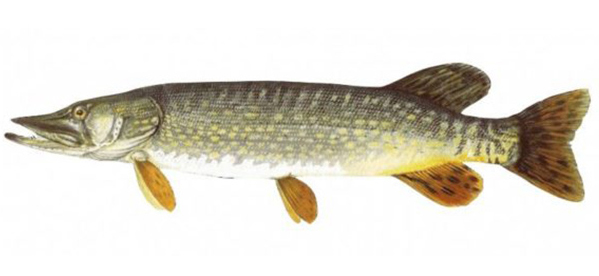Chapter 1 | TRAFFIC JAM
Exercise 1: draw cars from the side in a traffic jam from memory. You can make your traffic jam so chaotic that cars try to drive over each other, in the same or opposite directions. Perhaps some drivers have already gotten out in frustration and are climbing over other cars to get to their appointment or home on time.
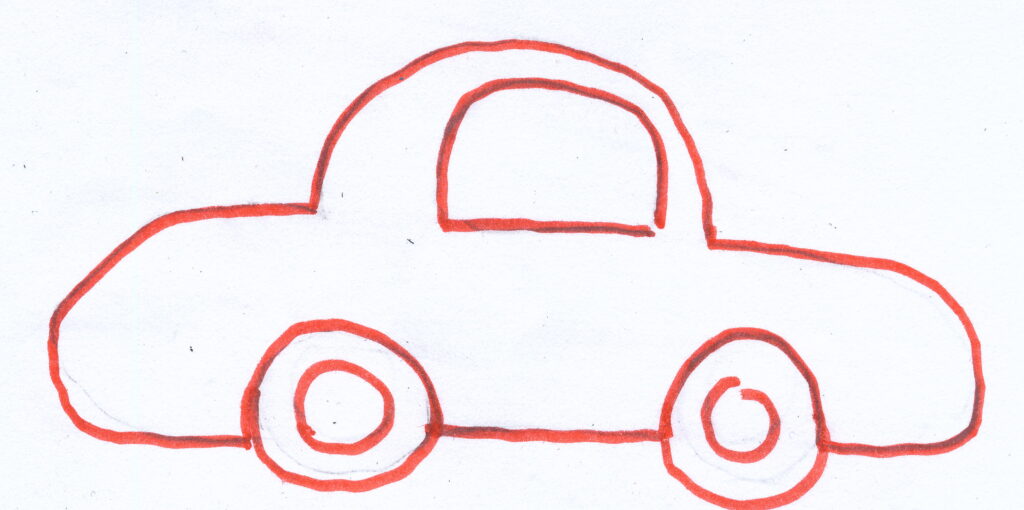
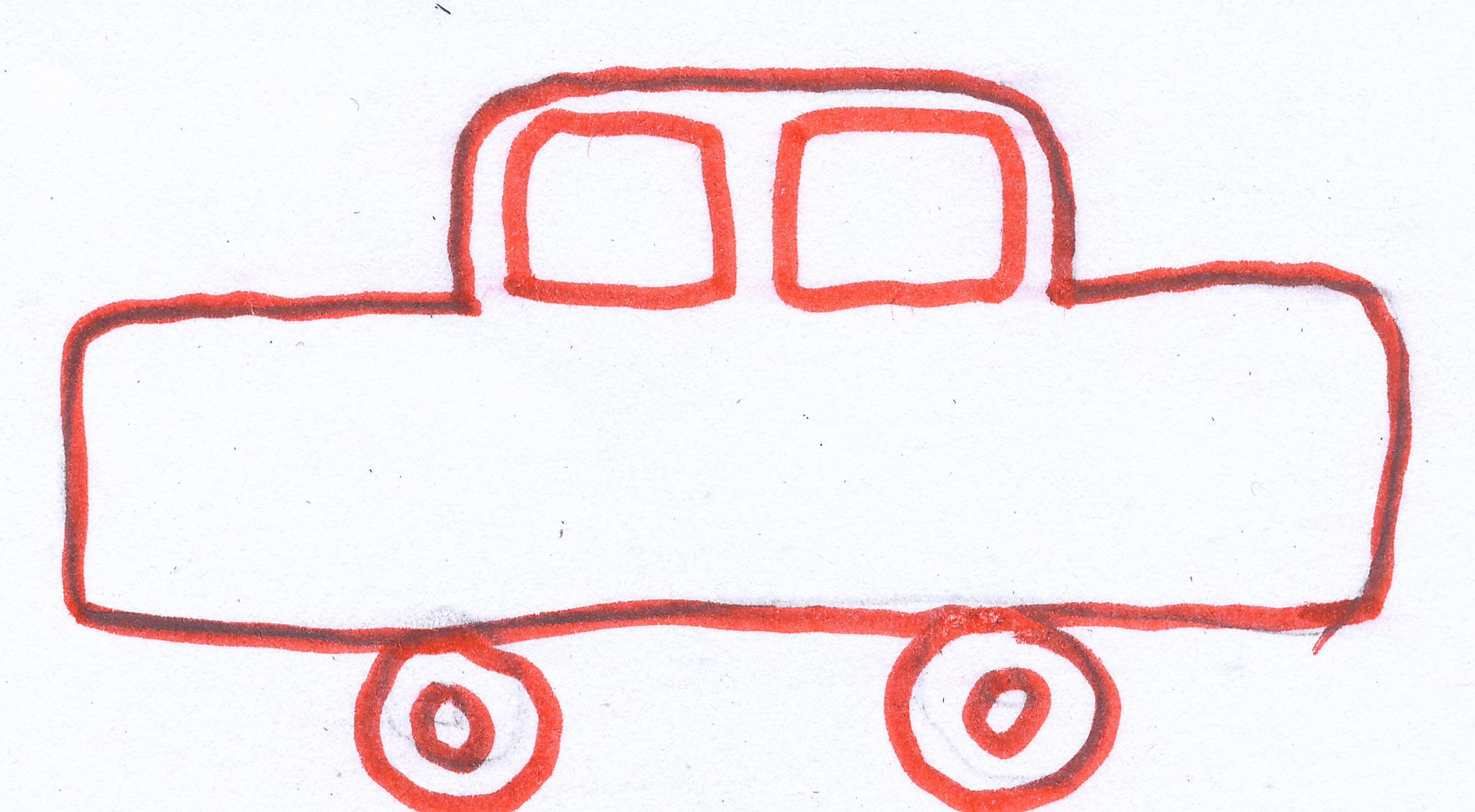
My cars don’t look very realistic. The bodywork of a real car is designed very precisely. Every line, every curve and every detail has been thoroughly designed by draughtsmen, industrial designers and engineers. Copying a real car is therefore quite a precision job.
Exercise 2: Choose a photo or drawn example of a car from the side. First, very lightly draw the bare outline shape and the location of the wheels. Make it easier by using assisting lines. After the outline and the wheels, draw the doors and windows. Please note that the lines of the windows and doors are often oblique and/or curved.
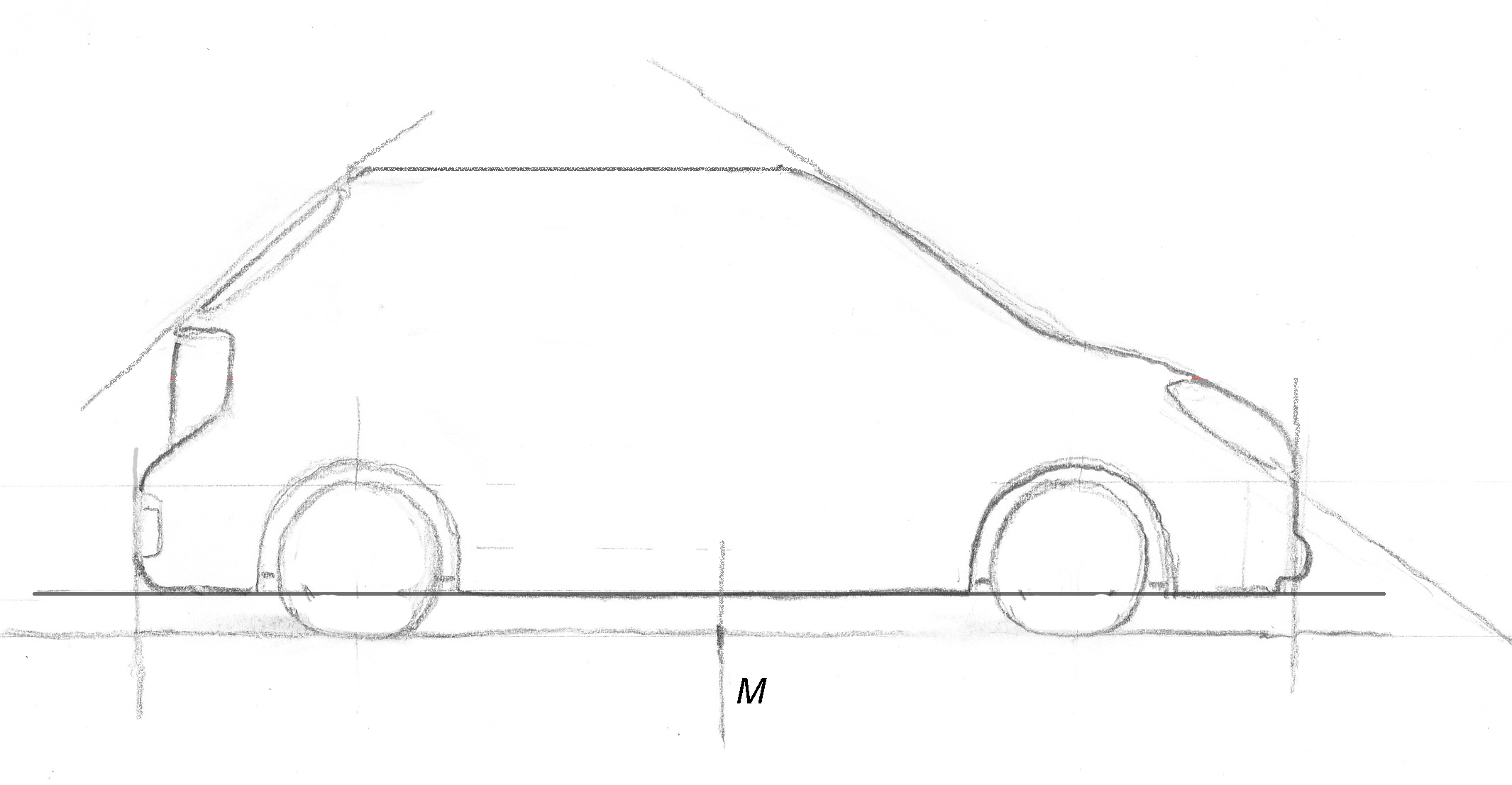
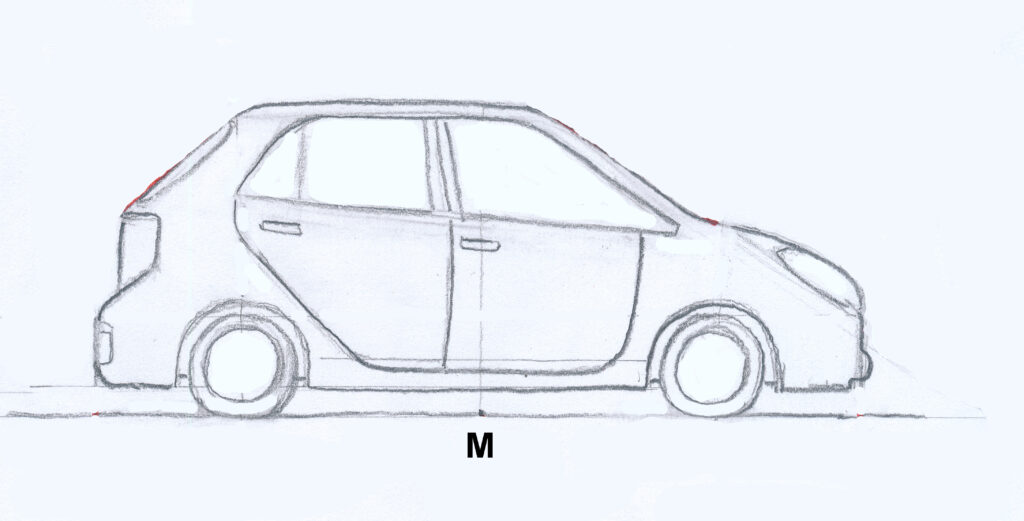
City car
Sometimes designs are so original that they become famous, such as the Citroën DS from 1955. The design was nicknamed ‘The Pike’ because of its pointed front and rounded lines. If you want to try to copy this design, you can start with the shape of the lower body of the car without windows and roof, as it were the body of the pike. The arc from the rear to the front of the car is crucial. Note that the bottom of the car is not exactly horizontal. The front wheel is completely visible, the rear wheel is not.
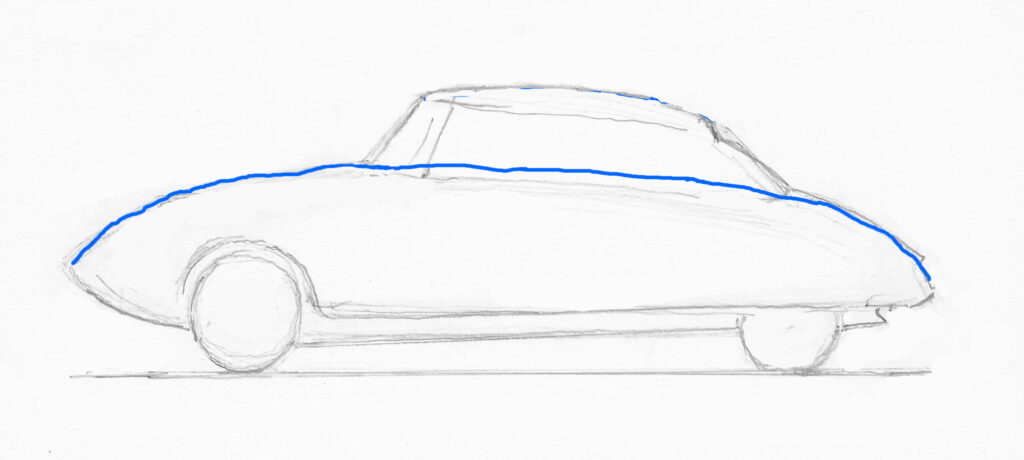
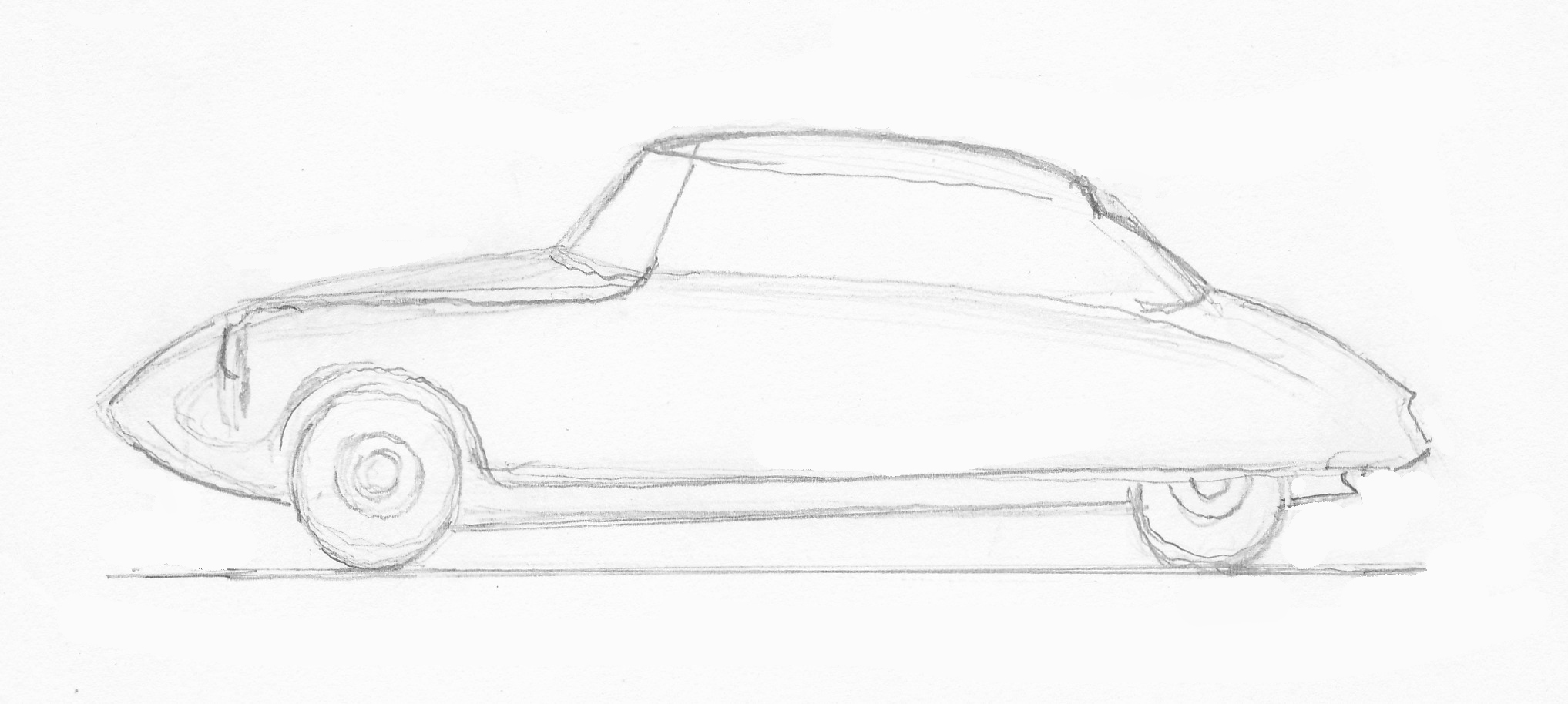
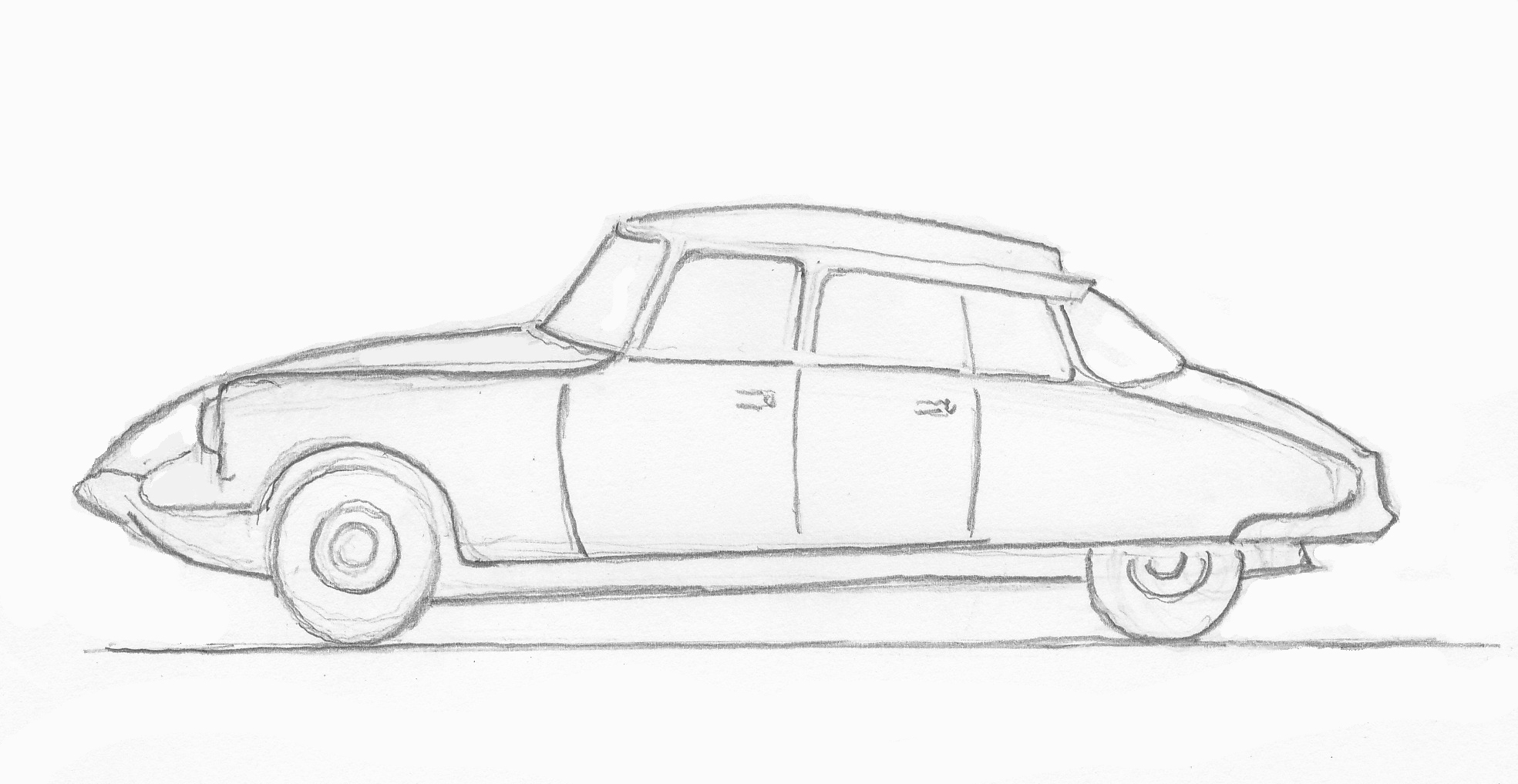
Citroën DS 19, Bertoni en Lefebre, 1955
